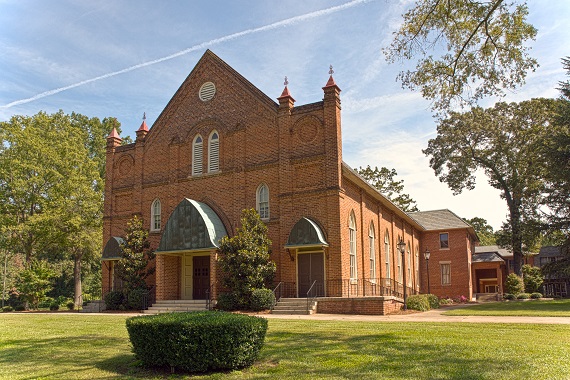Bernhard Thuersam www.Circa1865.org The Great American Political Divide
The Entrepreneurial Spirit
Though much of his background is based on oral history and tradition, Thomas Day is believed to have been born near Milton, North Carolina in either Halifax or Pittsylvania County. This son of free black mother Morning S. Day, was born in 1801, and his father is unknown.
On 27 November 1851 Thomas Day wrote his daughter: “I am perfectly satisfied regarding Milton – I came here to stay four years & am here 7 times four [28 years] I love the place no better no worse than [the] first day I came into it.” It can be inferred from this that Day arrived in Milton about 1823, and in 1827 when he was listed in tax records as a property owner.
He appears in a March 1, 1827 advertisement in the Milton Gazette & Roanoke Advertiser as “Thomas Day, Cabinet Maker” thanking his customers for the business received from them as well as hawking “a handsome supply of mahogany, walnut and stained furniture, the most fashionable and common bedsteads, etc.”
Prior to arriving in Milton, Day appears to be a 22-year-old trained and an apprenticed cabinetmaker, and only four years later has accumulated sufficient wealth to purchase property and a Milton business address.
Thomas married free black Aquila Wilson of Virginia in 1830, but could not bring her into North Carolina which in 1827 had forbid the immigration of free blacks into the State. This was the result of inflammatory anti-slavery rhetoric and publications emanating from the North – ironically from those whose neighbors and fathers had engaged in the transatlantic slave trade which no doubt brought Thomas Day’s ancestors in chains from Africa.
Day petitioned the North Carolina General Assembly to allow his wife to join him, and was supported in this by sixty-one white citizens who desired a special act on his behalf, noting him as “a free man of colour, of very fine character – an excellent mechanic, industrious, honest and sober in his habits – in the event of any disturbance amongst the Blacks, I should rely upon him with confidence upon a disclosure from him – as he is the owner of slaves as well as real estate.”
On the eve of war in 1861 Day was a free black who owned three slaves and also trained white apprentices in the art of cabinetmaking. Other free black owners of slaves were Catherine Stanly of nearby Craven County with 7 black slaves, Henry Vaughn of Hertford County with 1 slave, Thomas Jones of Anson County with 5 slaves, E.H. Revel of Cleveland County and Will Evans of Granville County with 2 slaves each – and in Franklin County Thomas Blacknall owned 3 slaves and John Hogwood owned 1 slave. The 1830 census showed many more free black owners of slaves.
Thomas Day was a member of Milton’s predominantly white Presbyterian Church, and sat in a front bench that he had hand-carved. In 1841 he and his wife became full members of this Church. Day counted among his clients Attorney General Romulus M. Saunders, later United States minister to Spain, and Governor David Settle Reid. His carved furniture for the Governor’s mansion in Raleigh, it is said, was rejected due to its high cost.
Sources: The Free Negro in North Carolina, 1790-1860, John Hope Franklin, UNC Press, 1943. Dictionary of NC History, Vol. 2, William S. Powell, UNC Press, 1986.






